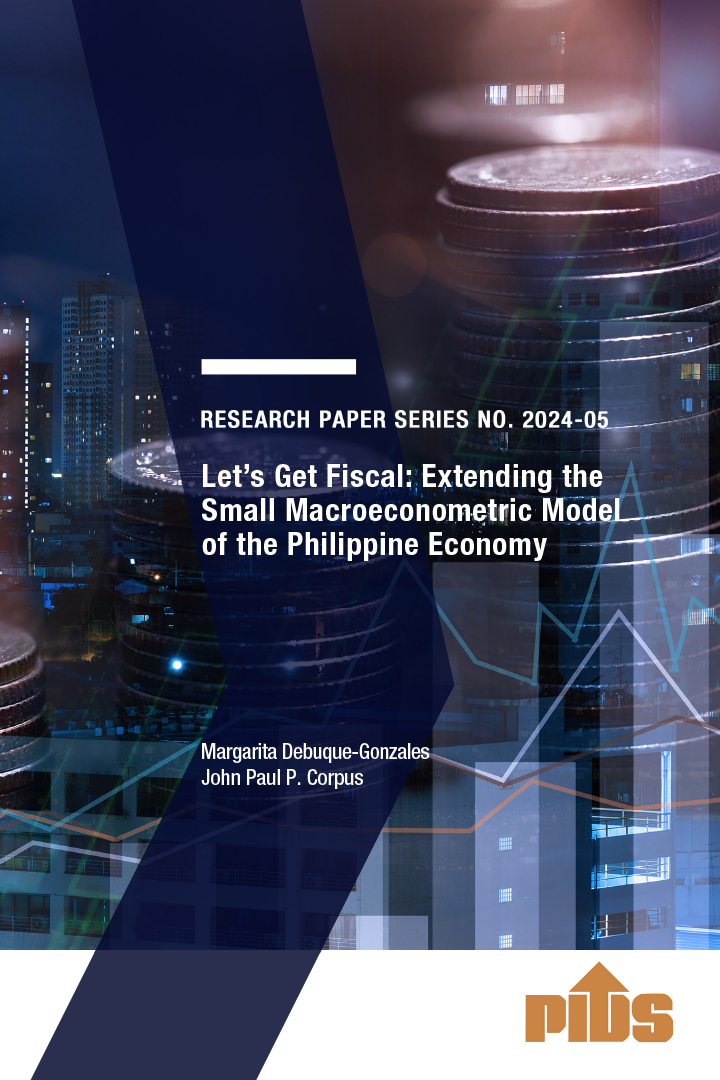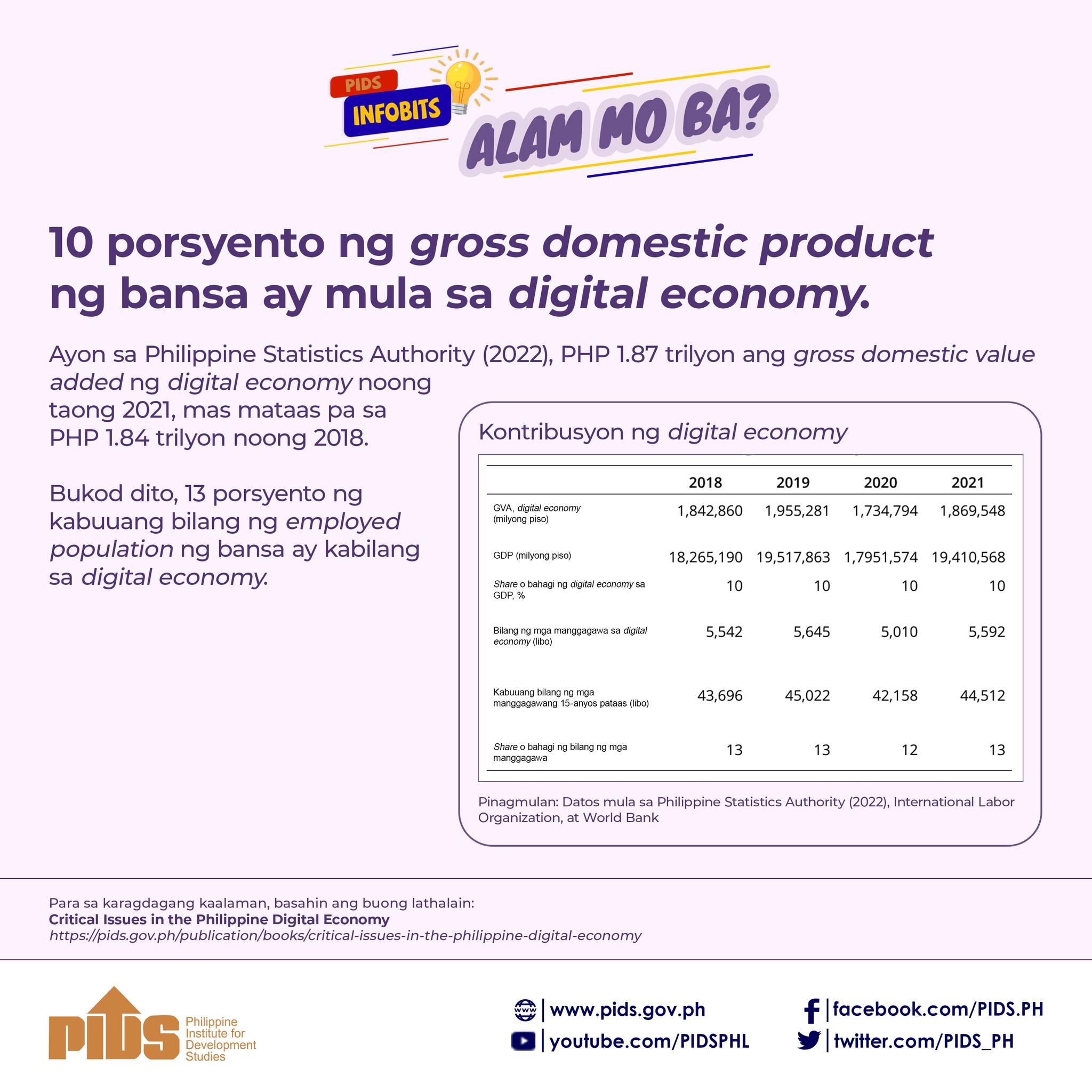MANILA, Philippines — National Economic Development Authority (NEDA) acting Director-General Karl Kendrick Chua has assured the public that the COVID-19 pandemic is just a “temporary setback” on the economy as the Philippines is performing better than other countries.
“Itong COVID crisis ay isang temporary setback. Lahat po ng bansa ay naghihirap dahil dito, walang exempted. Pero ang kalagayan po natin ay mas maganda at mas handa po tayo na makabawi sa lalong madaling panahon,” Chua said Saturday in an online press briefing.
(The COVID-19 crisis is just a temporary setback. All countries suffer from this, there is no exemption. However, our situation is better than others and we are more prepared to recover more quickly.)
The acting NEDA chief claimed that the Philippine economy’s 6.6% gross domestic product (GDP) growth seen between 2016 and 2019, which he credited to the Build, Build, Build program, the TRAIN Law, and the Rice Tariffication Law, gave the government enough funds for its social amelioration program and other COVID-19 measures.
He explained, however, that despite the Philippines having one of the biggest economies at the start of 2020, the three unexpected crises that the country faced had a significant negative effect on the GDP. He specified the three crises as the Taal Volcano’s explosion, the COVID-19 pandemic, and the imposition of enhanced community quarantine over several areas.
“Ito po ay nagdulot ng isa sa mga pinakamababang GDP growth rate. In fact, negative 0.2% nga, ibig-sabihin lumiit ‘yung ating GDP. Ito po ang unang pagkakataon na nagkaroon tayo ng recession since 1998,” Chua stressed.
(This caused the lowest GDP growth rate. In fact, its negative 0.2%, meaning our GDP shrank. This is the first time we experienced a recession since 1998.)
The Philippine economy is also projected to lose up to P2.5 trillion due to the pandemic, the state-run think tank Philippine Institute for Development Studies (PIDS) revealed in a recent study. The UK-based Oxford Economics also estimates that the country’s loss of output as of May is worth 5.8% of the GDP, the highest in the Asean-5.
Upper-middle income status still eyed
Chua said he hopes the country will still be able to achieve an “upper-middle-income country status” this year, but admitted that it might be delayed due to the global health crisis.
The Washington-based multilateral lender World Bank defined an upper-middle-income country as having per capita income of between $3,956 and $12,235.
The latest data on the World Bank’s website showed that the Philippines had a per capita Gross National Income (GNI) of $3,830 in 2018, hence still a lower-middle-income country.
In 2019, the Philippines should have had already moved up to upper-middle-income status had not delayed budget approval slowed GDP growth to an eight-year low of 6 percent.
Amid the pandemic, the Cabinet-level Development Budget Coordination Committee (DBCC) last month projected GDP to post zero growth at best, or contract by 0.8-1 percent at worst.
Budget Secretary Wendel E. Avisado, who chairs the DBCC, told the Inquirer that the government’s macroeconomic assumptions and targets will again be reviewed next week.
“Sana po this year ay ma-achieve natin ‘yung upper-middle-income country status. Ang problema naman ay dahil sa unexpected crisis natin, dulot ng COVID, baka ma-delay po ‘yan. Pero lahat ng bansa nakikita po natin na y’ung kanilang economic growth ay humina o lumiit nga, nag-contract,” Chua said.
(I hope that we will still be able to achieve the upper-middle-income country status. Our problem is that because of this unexpected crisis due to COVID-19, that might be delayed. But we can see that other countries are experiencing economic decline.)
“So I think temporary setback lang ito, pero susubukan natin humabol (I think this is just a temporary setback, but we will still try to catch up) if not next year, by 2022.” he added.
Last March, former Neda chief Ernesto M. Pernia told the Inquirer that even with the then downgraded growth projections at the onset of the pandemic, the Philippines’ bid to upper-middle-income country status would no longer be delayed “as we’re already in the cusp of hurdling the threshold.”
Pernia had said that a 3-4 percent increase in GNI per capita this year will raise the Philippines’ per capita income above $3,956.
But during the first quarter, GNI declined by 0.6 percent year-on-year.
The possible delay in climbing to upper-middle-income country status, however, may benefit the Philippines at a time when it planned to borrow more from multilateral lenders and bilateral development partners to replenish funds for COVID-19 response.
Under the Duterte administration’s four-pillar socioeconomic strategy against COVID-19, the government wanted to secure an additional P310 billion from the Manila-based Asian Development Bank (ADB), the Beijing-based Asian Infrastructure Investment Bank (AIIB), and the World Bank—on top of the record-high P1.4-trillion borrowings programmed under the 2020 national budget.
Finance Secretary Carlos G. Dominguez III last week disclosed that the Philippines was also in “very early stages” of talks for project-based financing from bilateral development partners such as China, France, Japan, and South Korea.
If the Philippines becomes an upper-middle-income country this year, it will lose by 2022 the access to preferential interest rates currently enjoyed for borrowings from its bilateral partners and multilateral institutions.
As such, the Philippines had aimed to achieve “A” credit ratings during the next two to three years so that it can continue borrowing at cheaper rates to finance big-ticket flagship infrastructure projects under the ambitious “Build, Build, Build” program.
However, debt watcher Fitch Ratings, for instance, last week downgraded its outlook for the Philippines to “stable” after raising it to “positive” last February, which meant that there will likely be no credit rating upgrade in the next 18-24 months.
In this regard, the delay in the ascent to upper-middle-income country status augured well to the Philippines’ plan to jack up borrowings during the near term, especially as spending more on public goods and services under a stimulus program was deemed crucial to revive the ailing economy.
“Life is always a trade-off,“ Chua told the Inquirer when asked to comment.
“Itong COVID crisis ay isang temporary setback. Lahat po ng bansa ay naghihirap dahil dito, walang exempted. Pero ang kalagayan po natin ay mas maganda at mas handa po tayo na makabawi sa lalong madaling panahon,” Chua said Saturday in an online press briefing.
(The COVID-19 crisis is just a temporary setback. All countries suffer from this, there is no exemption. However, our situation is better than others and we are more prepared to recover more quickly.)
The acting NEDA chief claimed that the Philippine economy’s 6.6% gross domestic product (GDP) growth seen between 2016 and 2019, which he credited to the Build, Build, Build program, the TRAIN Law, and the Rice Tariffication Law, gave the government enough funds for its social amelioration program and other COVID-19 measures.
He explained, however, that despite the Philippines having one of the biggest economies at the start of 2020, the three unexpected crises that the country faced had a significant negative effect on the GDP. He specified the three crises as the Taal Volcano’s explosion, the COVID-19 pandemic, and the imposition of enhanced community quarantine over several areas.
“Ito po ay nagdulot ng isa sa mga pinakamababang GDP growth rate. In fact, negative 0.2% nga, ibig-sabihin lumiit ‘yung ating GDP. Ito po ang unang pagkakataon na nagkaroon tayo ng recession since 1998,” Chua stressed.
(This caused the lowest GDP growth rate. In fact, its negative 0.2%, meaning our GDP shrank. This is the first time we experienced a recession since 1998.)
The Philippine economy is also projected to lose up to P2.5 trillion due to the pandemic, the state-run think tank Philippine Institute for Development Studies (PIDS) revealed in a recent study. The UK-based Oxford Economics also estimates that the country’s loss of output as of May is worth 5.8% of the GDP, the highest in the Asean-5.
Upper-middle income status still eyed
Chua said he hopes the country will still be able to achieve an “upper-middle-income country status” this year, but admitted that it might be delayed due to the global health crisis.
The Washington-based multilateral lender World Bank defined an upper-middle-income country as having per capita income of between $3,956 and $12,235.
The latest data on the World Bank’s website showed that the Philippines had a per capita Gross National Income (GNI) of $3,830 in 2018, hence still a lower-middle-income country.
In 2019, the Philippines should have had already moved up to upper-middle-income status had not delayed budget approval slowed GDP growth to an eight-year low of 6 percent.
Amid the pandemic, the Cabinet-level Development Budget Coordination Committee (DBCC) last month projected GDP to post zero growth at best, or contract by 0.8-1 percent at worst.
Budget Secretary Wendel E. Avisado, who chairs the DBCC, told the Inquirer that the government’s macroeconomic assumptions and targets will again be reviewed next week.
“Sana po this year ay ma-achieve natin ‘yung upper-middle-income country status. Ang problema naman ay dahil sa unexpected crisis natin, dulot ng COVID, baka ma-delay po ‘yan. Pero lahat ng bansa nakikita po natin na y’ung kanilang economic growth ay humina o lumiit nga, nag-contract,” Chua said.
(I hope that we will still be able to achieve the upper-middle-income country status. Our problem is that because of this unexpected crisis due to COVID-19, that might be delayed. But we can see that other countries are experiencing economic decline.)
“So I think temporary setback lang ito, pero susubukan natin humabol (I think this is just a temporary setback, but we will still try to catch up) if not next year, by 2022.” he added.
Last March, former Neda chief Ernesto M. Pernia told the Inquirer that even with the then downgraded growth projections at the onset of the pandemic, the Philippines’ bid to upper-middle-income country status would no longer be delayed “as we’re already in the cusp of hurdling the threshold.”
Pernia had said that a 3-4 percent increase in GNI per capita this year will raise the Philippines’ per capita income above $3,956.
But during the first quarter, GNI declined by 0.6 percent year-on-year.
The possible delay in climbing to upper-middle-income country status, however, may benefit the Philippines at a time when it planned to borrow more from multilateral lenders and bilateral development partners to replenish funds for COVID-19 response.
Under the Duterte administration’s four-pillar socioeconomic strategy against COVID-19, the government wanted to secure an additional P310 billion from the Manila-based Asian Development Bank (ADB), the Beijing-based Asian Infrastructure Investment Bank (AIIB), and the World Bank—on top of the record-high P1.4-trillion borrowings programmed under the 2020 national budget.
Finance Secretary Carlos G. Dominguez III last week disclosed that the Philippines was also in “very early stages” of talks for project-based financing from bilateral development partners such as China, France, Japan, and South Korea.
If the Philippines becomes an upper-middle-income country this year, it will lose by 2022 the access to preferential interest rates currently enjoyed for borrowings from its bilateral partners and multilateral institutions.
As such, the Philippines had aimed to achieve “A” credit ratings during the next two to three years so that it can continue borrowing at cheaper rates to finance big-ticket flagship infrastructure projects under the ambitious “Build, Build, Build” program.
However, debt watcher Fitch Ratings, for instance, last week downgraded its outlook for the Philippines to “stable” after raising it to “positive” last February, which meant that there will likely be no credit rating upgrade in the next 18-24 months.
In this regard, the delay in the ascent to upper-middle-income country status augured well to the Philippines’ plan to jack up borrowings during the near term, especially as spending more on public goods and services under a stimulus program was deemed crucial to revive the ailing economy.
“Life is always a trade-off,“ Chua told the Inquirer when asked to comment.












